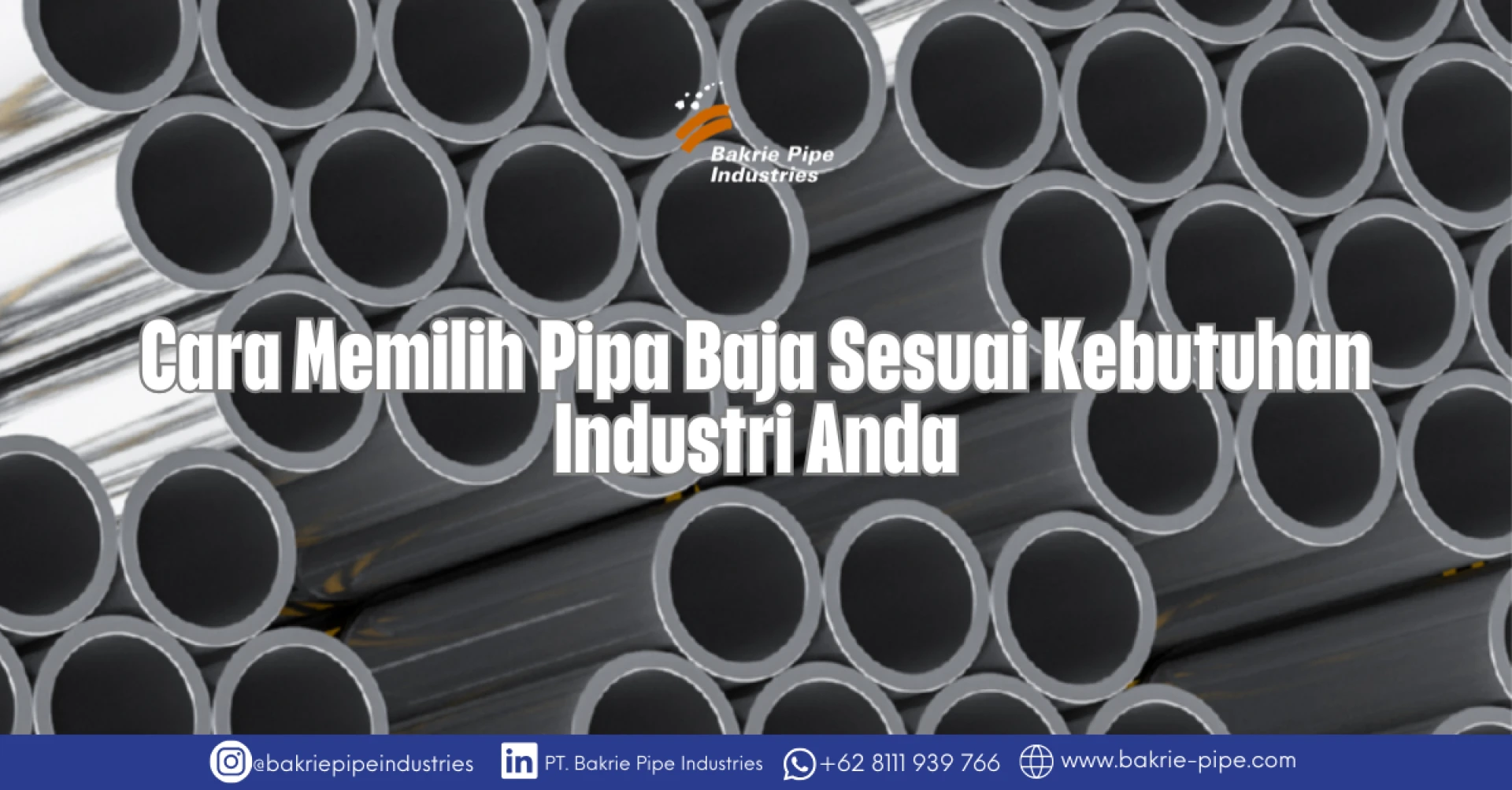Hello Pipe Enthusiasts, and welcome to the latest edition of #BPIPipeInsights!
After previously discussing The Application of Steel Pipes in the Automotive and Manufacturing Industry, now we move to an equally essential topic: how to choose the right steel pipe that suits your industrial needs. From selecting the welding method, technical standards, protective coatings like galvanizing, to after-sales support, this article will help you make informed and efficient decisions.
1. Understand Diameter Range and Production Methods
At Bakrie Pipe Industries, all welding methods, HFW/ERW, LSAW, and HSAW, can be applied across various industrial sectors including oil and gas, infrastructure, energy, and manufacturing. The main difference lies in the diameter capacity supported by each method:
|
Production Method
|
Diameter & Length Capacity
|
General Characteristics
|
|
HFW / ERW
|
½ inch to 24 inch, with pipe lengths of 6 and 12 meters
|
Suitable for light structural and technical piping
|
|
LSAW
|
24 inch to 48 inch, with pipe lengths of 6 and 12 meters
|
Ideal for heavy-duty and high-pressure applications
|
|
HSAW
|
14 inch to 140 inch, with pipe lengths from 6 and 12 up to 64 meters or more
|
Flexible for transmission lines and large-scale projects
|
Note: The selection of the welding method depends on diameter, quantity, field conditions, and logistics.
2. Use the Appropriate Standards and Specifications
Ensure the steel pipe meets relevant technical and regulatory requirements, such as:
- SCH and NPS, to determine wall thickness and nominal dimension
- API, ASTM, SNI, AWWA, DNV-ST-F101, UL Metallic Sprinkler, JIS, RHS, SHS, BOS, SIO, XL, for quality assurance across applications
- TKDN, important for projects with local content obligations
Note: Complete technical documentation makes procurement and quality audits more efficient.
3. Choose Pipe Protection (Coating) According to Application Environment
External protection plays a crucial role in long-term durability and service life:
|
Environment / Application
|
Recommended Protection / Coating
|
|
Offshore / Marine Areas
|
3LPE + CWC + Anode (Cathodic Protection)
|
|
Damp / Wet Ground
|
FBE, Galvanized, External Epoxy
|
|
Water Flow Systems
|
Galvanized, Cement Lining, Internal and External Epoxy
|
Note: Galvanized pipes are commonly used in buildings, machine frames, and factory utility lines.
4. Choose a Manufacturer with Capacity and Technical Support
Evaluate your supplier based on:
- Production capacity, quality consistency, and delivery estimate
- Technical testing such as hydrotest, NDT, and certification
- Availability of engineering assistance and after-sales support
Note: BPI has supported various large-scale national projects across the automotive, oil and gas, energy, EPC, and construction sectors.
Consult Your Project Requirements Directly
Each industrial sector has unique challenges and specifications. To ensure the steel pipe you select is technically accurate, cost-efficient, and long-lasting, feel free to consult with our engineering and technical experts.
